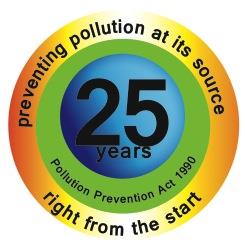Government agencies produce a tremendous number of publicly available data sets. In this P2 Week blog post, I’ll highlight some resources that will help you get started with a data driven approach to identifying P2 opportunities.
Webinar: Utilizing Public Data to Identify Technical Assistance Targets
The U.S. government has a wealth of data available about the environmental and economic impact of manufacturers. This webinar, hosted by ESRC, demonstrates how to use the EPA’s Toxics Release Inventory, Greenhouse Gas, and Enforcement and Compliance Online (ECHO) databases and the Census Bureau’s County Business Patterns database to identify industrial sectors and facilities that can benefit from pollution prevention technical assistance.
Information that can be easily obtained and utilized from these data sources is key for any technical assistance provider when developing a strategy to target technical assistance. Real-world examples located in regions 3 and 4 are provided.
Presentation slides, resources mentioned during the webinar, and a time-coded index for the video below are available on the ESRC web site.
How a competitor’s data can help your company cut pollution
This P2 Impact column by U.S. EPA’s Kara Koehrn explains how manufacturers can reduce pollution by using public data, chiefly Toxics Release Inventory (TRI) pollution prevention data, to learn from others in their industry.
Module 4: Identify and Target Facilities to Perform Hazardous Substances P2 Assessments
In 2013, U.S. EPA Region 5 (in collaboration with EPA headquarters) developed a 4-part training module to assist technical assistance programs (TAPs) in finding hazardous material reduction opportunities. This module demonstrates how the Minnesota Technical Assistance Program used TRI data to target their P2 technical assistance efforts. It also provides an overview of what types of information are included in TRI emissions and P2 data.
Report: Strategy for using the US EPA Toxics Release Inventory to Identify Opportunities for Diffusion of Innovative Methods for Hazardous Waste and Toxic Emission Reduction
This report shows how P2 technical assistance providers can use TRI P2 data to identify manufacturing facilities that have implemented toxics source reduction methods and facilitate the diffusion of those methods to other facilities that may be facing barriers that block adoption of P2 practices.
Report: The Economic and Environmental Impact of Great Lakes Manufacturing: Snapshot of Emissions, Pollution Prevention Practices, and Economic Impact Using Public Data
The manufacturing sector is an important economic engine within the Great Lakes states of Illinois, Indiana, Michigan, Minnesota, Ohio, and Wisconsin. While complying with applicable laws and regulations, these facilities also have an environmental impact on the region. In this study, the Great Lakes Regional Pollution Prevention Roundtable (GLRPPR) used publicly available environmental data to establish a regional baseline for industrial chemical use and emissions; pollution prevention (P2) techniques; greenhouse gas (GHG) emissions; and economic impact data for selected industry sectors in U.S. EPA Region 5. The report includes analyses of data from U.S. EPA’s Toxics Release Inventory (TRI), the Greenhouse Gas Emissions database on Envirofacts, and the Census Bureau’s County Business Patterns database on American FactFinder. See also GLRPPR’s paper Spotlight on U.S. EPA Region 5’s Food Manufacturing and Processing Industry for a more focused sector-based analysis.

